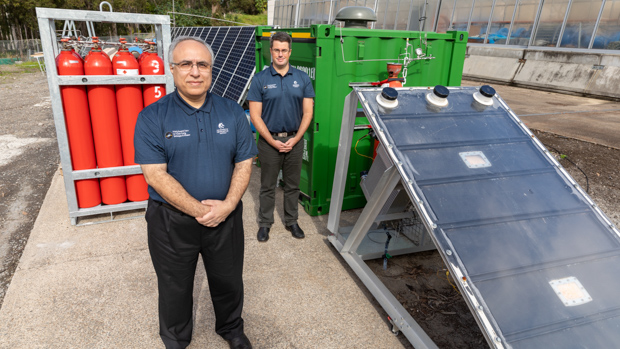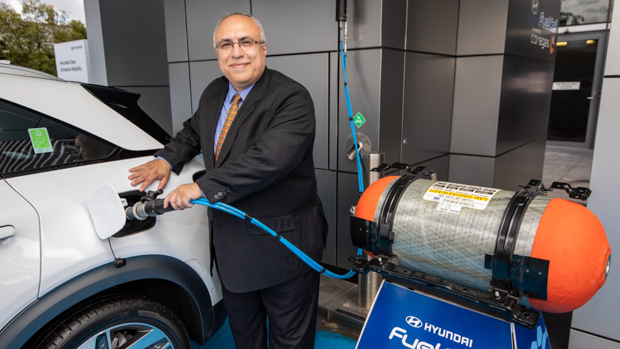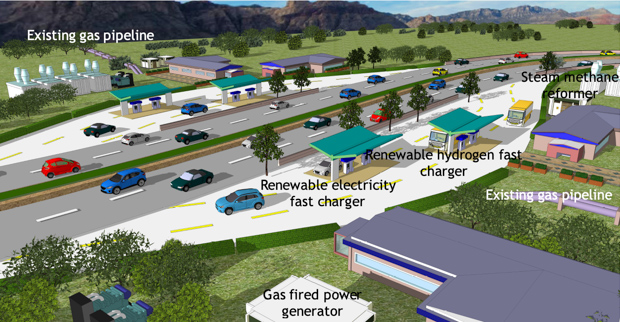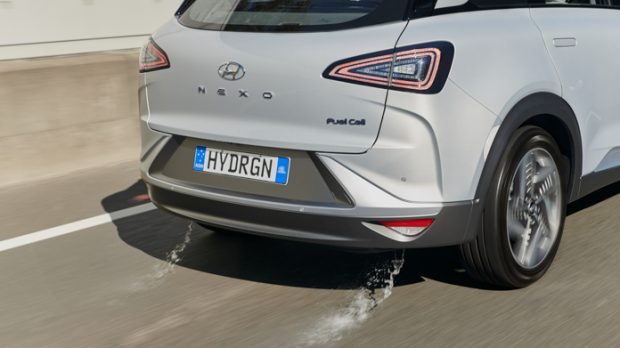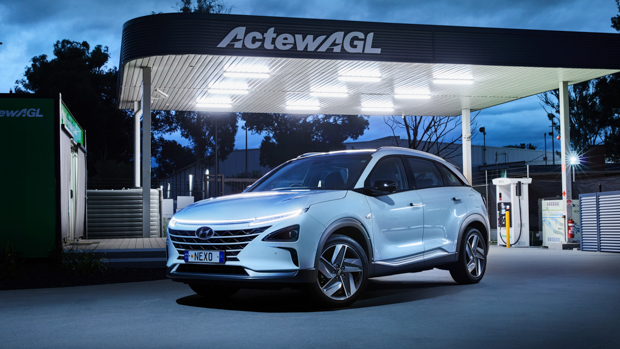-
Car Reviews
- Car News
-
Car Comparisons
Latest comparisons
- Chasing Deals
Battery electric vehicles may be getting all the limelight but hydrogen will likely have a big place in a future reliant on renewable energy and one team out of the University of Newcastle think they’ve cracked the code.
A team out of the University of Newcastle have begun a pilot program harvesting water drawn out of the air to fuel hydrogen-powered vehicles and even generate electricity for traditional battery electric vehicles.
Professor Behdad Moghtaderi led the team over the last four years to pursue harvesting hydrogen from the air as an alternative to traditional methods of extracting the gas from clean water, which is both scarce and required for drinking in Australia.
Hydrogen, in many ways, sounds a bit too good to be true. Using the most abundant element in our universe to fuel cars without generating harmful emissions leaving only pure water and air to trickle out of the tailpipe.
The catch with hydrogen is a logistical one; as the process of collecting, storing and transporting hydrogen can be a very energy and resource-intensive exercise.
In a gathering of industry minds at Hyundai’s Sydney headquarters this month, Prof Moghtaderi showcased this water harvesting technology by refuelling Australia’s first registered hydrogen car, the Hyundai Nexo midsize SUV.
“There are different ways of producing hydrogen,” Prof Moghtaderi told Chasing Cars. “You can use fossil fuels – but nobody wants to do that – you can produce it from biomass (organic materials) but by and large the best way is through water.”
Prof Moghtaderi said traditionally the problem with this method is it puts a strain on the limited resource of drinking water – particularly in Australia – so his team turned to harvesting water from the atmosphere.
Once collected, the water can be turned into hydrogen through the process of electrolysis, stored in gas canisters and taken away for use – or better yet, combined with carbon from the atmosphere to become methane.
The advantage of methane is it is able to travel through Australia’s existing and highly expansive network of gas pipelines to transport it to refuelling and recharging stations.
These locations would include future hydrogen stations where the methane is converted back into hydrogen to directly fuel a hydrogen fuel-cell car, or generate renewable power on-site that could charge a battery-electric car.
Energy company APA Group has partnered with renewable energy company Southern Green Gas to kickstart a pilot program to study the process of transporting water-harvested hydrogen in the real world.
APA Group manages around half of Australia’s natural gas usage and has an expansive network of pipes that could be adapted for use if the program was rolled out more broadly.
Mark Fothergill, the general manager of infrastructure engineering at APA Group, told Chasing Cars it made more sense to use an existing network of expansive pipelines rather than resorting to other, more expensive means.
“It’s a lot cheaper to transport energy in pipelines, powerlines are ten times more expensive (to move energy) than in a pipeline so there are lots of advantages for pipelines and we as a community need to recognize the advantages of pipelines,” Mr Fothergill said.
“There is no one solution for decarbonising the world, and this is the solution we are developing for Australia.”
Mr Fothergill said the existing network of gas lines would generally negate the costly need for ‘last mile’ transport of hydrogen to stations, as is currently the case for petrol and diesel fuels.
The project which has been backed by a $1.1million grant from the government-funded Australian Renewable Energy Agency and currently helps operates a small water harvesting station out of the University of Newcastle.
Toyota has now welcomed its own hydrogen fuel-cell vehicle, the Mirai sedan, to Australia that industry pundits predict will be followed by large commercial vehicles that are already being implemented in Europe.
Time will tell whether water harvesting technology takes off but with such extensive backing from both public and private sectors, Australia will likely sprout many more hydrogen stations in the coming years.
Latest news
About Chasing cars
Chasing Cars reviews are 100% independent.
Because we are powered by Budget Direct Insurance, we don’t receive advertising or sales revenue from car manufacturers.
We’re truly independent – giving you Australia’s best car reviews.
